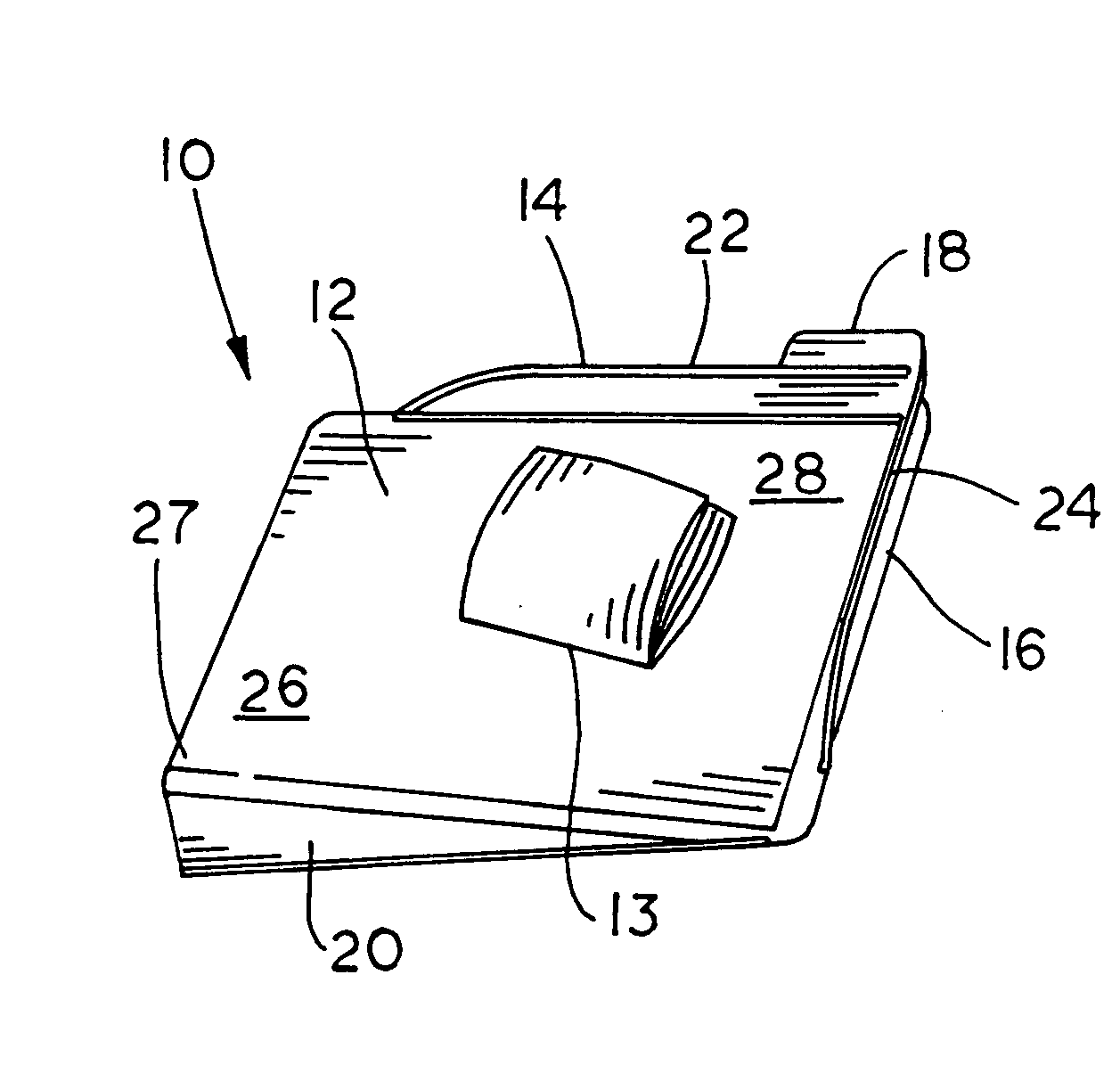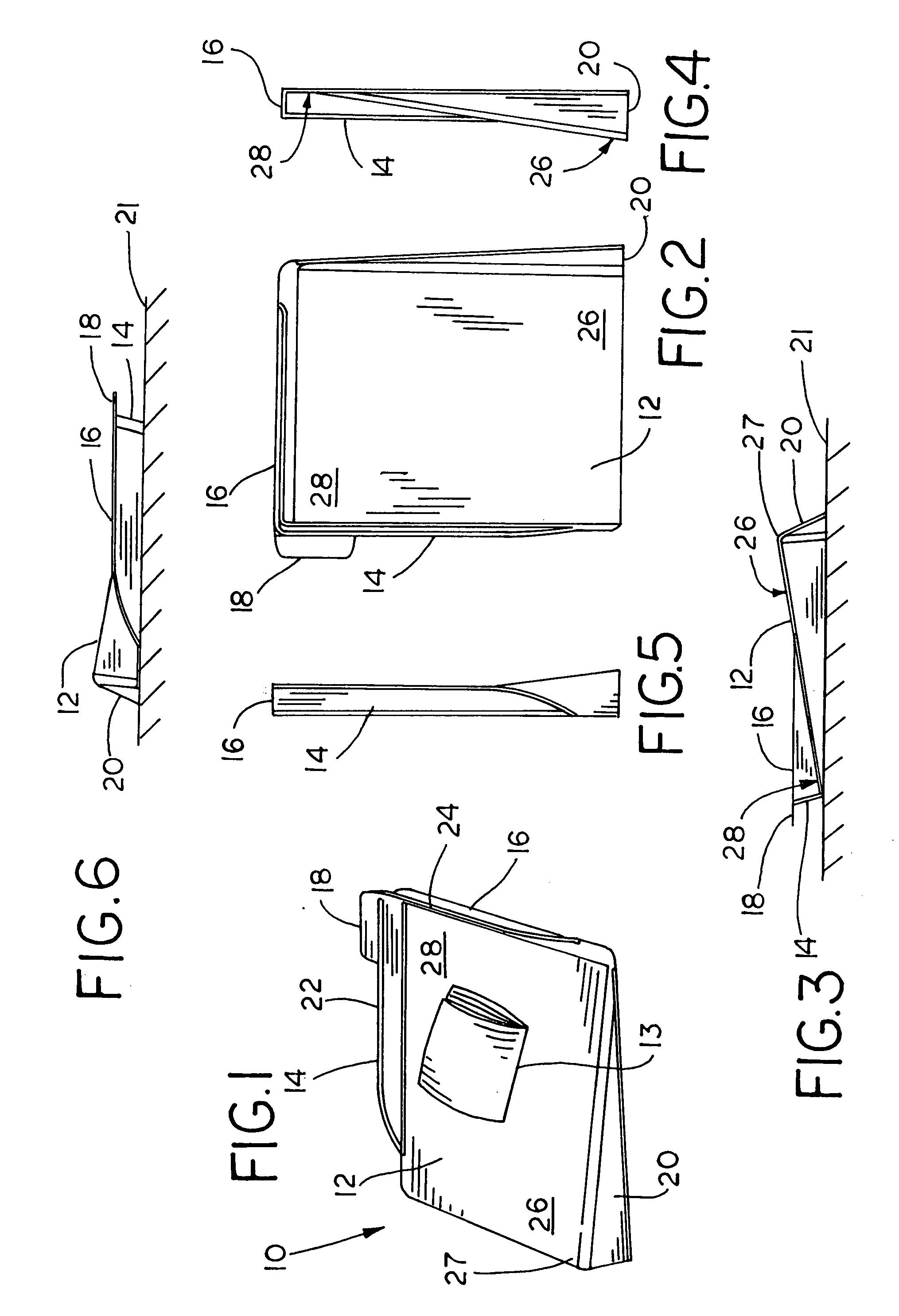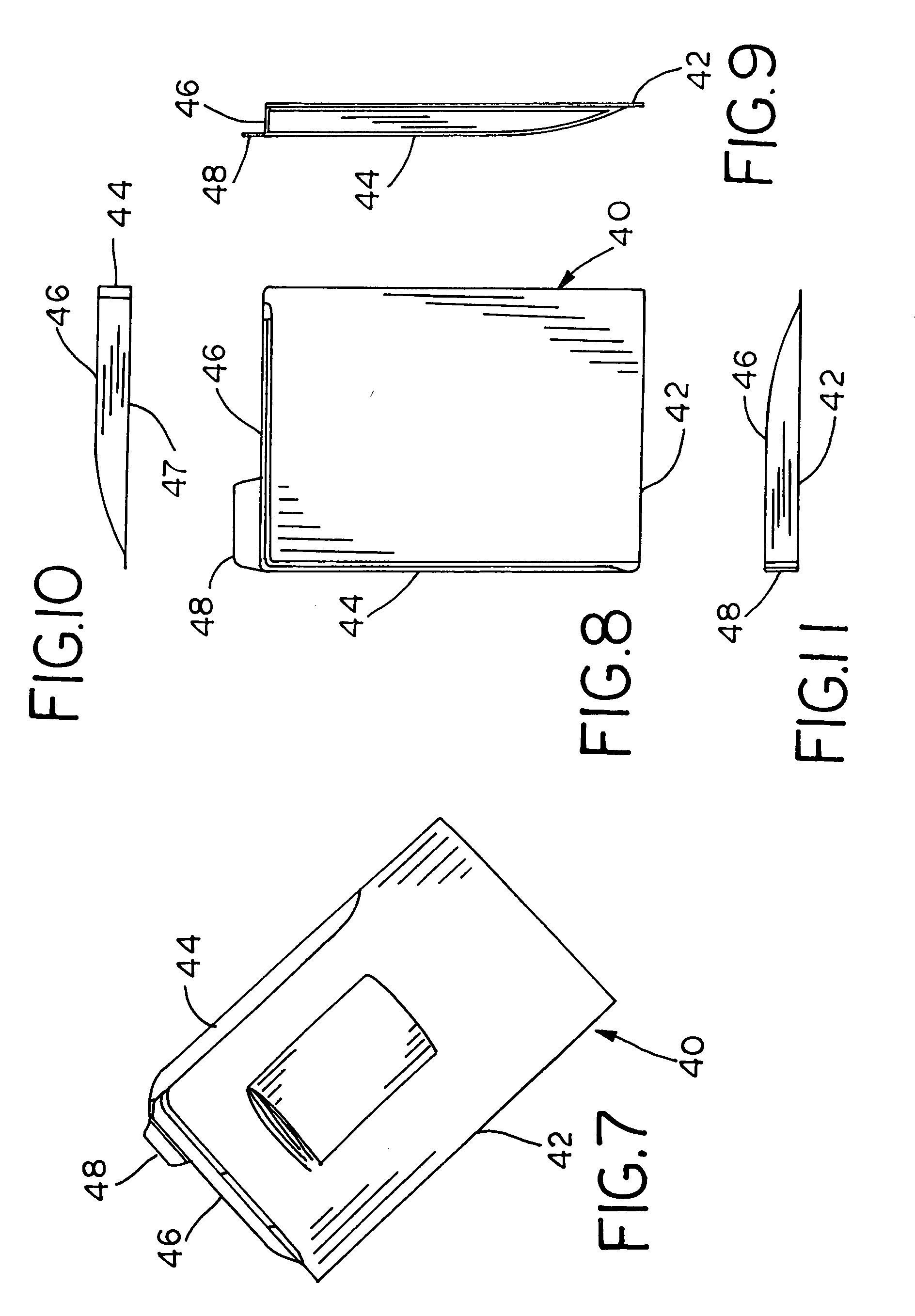Task trays
a tray and task technology, applied in the field of trays, can solve the problems of increasing the clutter and inefficiency of the work space, and accumulating a large number of files
- Summary
- Abstract
- Description
- Claims
- Application Information
AI Technical Summary
Benefits of technology
Problems solved by technology
Method used
Image
Examples
Embodiment Construction
[0029] Referring now to the drawings, and particularly to FIGS. 1-6, a first example of a task tray 10 is disclosed. The task tray 10 includes a base 12, which can be plate-like and is configured to support a file 13. While in this example a file 13 is shown, it is clear that any relatively flat item can be supported by the base 12. The tray 10 is configured to be stackable such that other trays, similar or identical in construction to tray 10, may be nested inside tray 10. Further, the dimensions of the task tray 10 can be scaled such that larger files such as legal files or smaller files can be stored.
[0030] Extending upwardly from the base 12 are a first wall 14 and a second wall 16. Extending outwardly from the first wall 14 is a tab 18. Extending downwardly from the base 12 is a support wall 20. The tray 10 is generally placed on top of a surface 21 (shown in FIGS. 3 and 6), which can be a desk top, table, or any other surface upon which a file 13 might be placed. In this exam...
PUM
 Login to View More
Login to View More Abstract
Description
Claims
Application Information
 Login to View More
Login to View More - R&D
- Intellectual Property
- Life Sciences
- Materials
- Tech Scout
- Unparalleled Data Quality
- Higher Quality Content
- 60% Fewer Hallucinations
Browse by: Latest US Patents, China's latest patents, Technical Efficacy Thesaurus, Application Domain, Technology Topic, Popular Technical Reports.
© 2025 PatSnap. All rights reserved.Legal|Privacy policy|Modern Slavery Act Transparency Statement|Sitemap|About US| Contact US: help@patsnap.com



